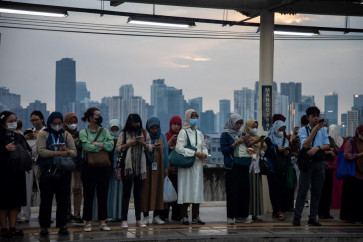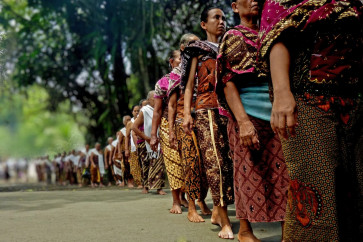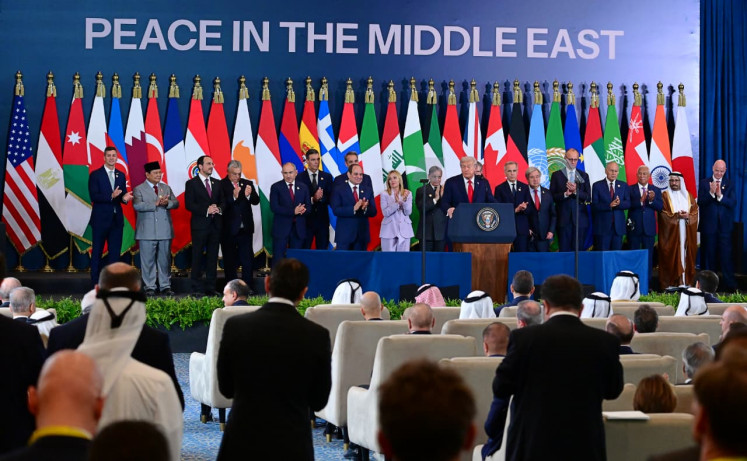Popular Reads
Top Results
Can't find what you're looking for?
View all search resultsPopular Reads
Top Results
Can't find what you're looking for?
View all search resultsQuestions on witnessing violence
We are witnessing a new age of spectacular violence
Change text size
Gift Premium Articles
to Anyone
W
e are witnessing a new age of spectacular violence. When we read stories about people digging up and exposing the dead body of an Ahmadiyah follower in a graveyard, we are encountering the very definition of the spectacular: a “dramatic” or “elaborate display”.
The reform era has brought with it increasing openness, including openness to techniques of violence that transcend our imagination of the grotesque — something primarily influenced by horror movies.
Violence is, of course, neither new nor exotic for us Indonesians. We have been trained to see it, and even live with it, from an early age.
For some of us, watching the film Pengkhianatan G30S/PKI was an initiation to adulthood. We suddenly learned that we had a history built upon eye-gouging women and decomposed, tortured bodies.
This was a form of violence legitimized and endorsed for public viewing to suit the interests of the Soeharto regime. Later we discovered that we should look for what was not supposed to be seen. We started the long project of unearthing the crimes of the New Order crimes to make hidden violence more visible. Like truth, most violence during those times was spectral. The ability to see was a luxury.
What is new since the reform era began in 1998 is that Internet technology has allowed us to pass the crisis of visibility. Before our eyes, now everything is laid bare.
Living overseas, I regard Twitter as an important medium to get fast updates about what is happening back home and to see how fellow Indonesians on day-to-day basis, grapple with their contemporary reality.
Yet the medium can be rather eerie. People can express their anger or grief over the killings of Ahmadis, changing their profile pictures into plain black image as a sign of mourning and in the next 30 minutes tweet about what to eat for dinner. Violence has been woven, almost seamlessly, into the banality of our everyday lives.
There is no such thing as an innocent way of seeing. Thus, “spectacular” violence confronts us with the question of positioning. Here I am using the term “us” as a generalization to refer to people who believe in the values of pluralism and embrace the idea that citizenship entails the fulfillment of basic rights, including the right not to be violated by others.
I doubt that we want to assume the place of passive onlookers, given the spirit of reform that inspires (or pressures) ordinary citizens to express a certain political awareness (albeit only on social media).
If, to borrow from Elie Wiesel’s famous remark on the Holocaust, “for the dead and the living, we must bear witness,” what risks are we willing to take as witnesses?
Violence today is so spectacular and at the same time so cheap precisely because it is widely accessible. What exactly is the danger of witnessing “now”? In what ways should we see without being immune to shock, without forgetting that the disruptive remains haunting?
While there is no clear-cut answer to these questions, they lead us to the more basic question of what we look at and overlook and how. If everything today is rendered visible, how can certain forms of violence have more visibility in our eyes than others?
When former transgender queen Shakira was shot dead on March 10, some articles linked her death to
a broader political issue: The slow response of the police in handling cases of violence against transgendered people.
I returned to Twitter and found that prominent public figures had said nothing about it. There were only tweets by young people expressing their relief, “Oh, apparently it’s not Shakira the singer, but Shakira the waria.”
Assaults on transgendered individuals by both the state apparatus and civil society are recurrent and triggered by entrenched homophobia.
As in the case of Ahmadiyah, terror against transgender people and the more broadly LGBT (lesbian, gay, bisexual and transsexual) groups has been conducted in the name of religion as evidenced in the Islam Defenders Front’s attacks on a transgendered workshop in Depok and the international LGBT conference in Surabaya last year.
In both the Ahmadiyah and LGBT attacks, the police assumed a role as “mediator”, which I (re)define as conflict management, in a post-1998 way: Not preventing acts of violence and instead persuading victims to be complicit to threats. What we have is the same story of terror coming from civil society and the failure of the state to protect its citizens.
Even in an age where everything is articulated and exposed, visibility remains an issue. The atrocity perpetrated on Ahmadiyah followers have united activists, artists, politicians and even those who had no prior interest in the issues of religion because it is the most blatant humiliation to humanity. Such a slap in the face has even forced our President to finally speak.
But those who related the death of Shakira to a series of unsolved cases of violence not taken seriously by authorities were quite predictable: LGBT activists.
If we tend to see that the problems of women or LGBT belong exclusively to the “gender and sexuality” section of the democracy landscape (and thus the responsibility of feminists and LGBT activists), we may be participating in the long tradition of pigeonholing and failed to identify our immediate stakeholders.
We need to question our relationship to the violence that we witness and the consequences of such a relationship. We also need to question how our eyes filter and categorize, playing an active role in the “now-you-see-it, now-you-don’t” game.
As we are bombarded by scenes of spectacular violence, one of our challenges is to connect the dots and say, “I see what you see. Let’s start from there, together.”
The writer is an author and doctoral student at New York University researching film culture and sexual politics in Indonesia.










